Street-Level ‘Hostile Intent’ Indicators
This is covert operative street smarts tuned for everyday people who walk to the bodega, catch a jeepney, or cut through housing blocks – to spot pre-attack cues early to change the outcome.
You won’t turn into an operative knowing urban hostile indicators, but it can keep you seeing the world around you like one. It borrows the parts of tradecraft that civilians can use in their everyday life – baselining any area, reading behavior, and acting before trouble closes distance.
When I say “streets,” I mean hard neighborhoods – Fordham Road in the Bronx, Tondo in Manila, the Quartiers Nord in Marseille – places with layered hustle, fast crowds, and informal power structures. These cues are about behavior and environment, not demographics. Don’t profile people; profile patterns. Establish what’s normal for this block right now, then hunt for deviations that suggest pre-attack or pre-collection intent.
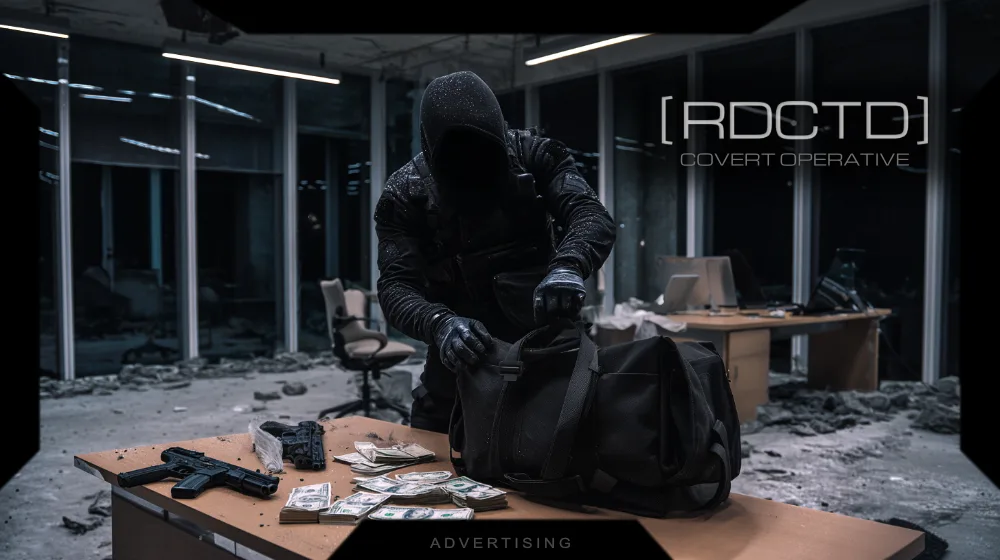
The Three-Second Target Scan
Pre-attack eyes bounce from your hands to your waistline to your face, then to your exit path – fast, mechanical, repeatable. In street markets and bus queues, collection operatives do the same but add your pockets, watch, and bag zippers. It’s inventory and feasibility checking, not admiration. If the scan resets when you adjust position, that’s your cue.
- PRO TIP: Break line of sight and change your silhouette – jacket over bag, phone pocketed, shoulders squared. Predators like predictable prey, deny the read.
Opportunistic Escort Drift
A single stranger matches your pace for a block or two, stays just off your shoulder, and mirrors turns without overt attention – pretending to be on a call, humming along. They’re testing your route to find a clean spot for an approach or to hand off your pattern to a teammate.
- PRO TIP: Insert a tempo change – stop to tie a shoe by a lit storefront or step into a busy doorway, then re-enter at a different cadence. If they re-sync twice, treat it as targeting and move toward staffed terrain or transport.
Predatory Positioning at Chokepoints
Offenders favor funnels: narrow sidewalks, footbridges, stairwells, bus stops, corner bodega entrances. Watch for one or two individuals posted just past a pinch – hands free, hips bladed to the flow, eyes scanning upstream for targets. They’re not waiting for anyone, they’re hunting for timing and separation. If a second person is offset across the flow, you may be walking into a pocket.
- PRO TIP: Float wide before the pinch and force an angle that makes them move; if they mirror, you’ve likely ID’d intent. Pivot routes or create a noisy pause inside a lit shop.
Hidden Hands and Clothing Mismatch
Behavior beats fashion. Look for one stiff arm (elbow pinned) protecting a concealed item, frequent waistband touches, or a jacket worn zipped in humid heat while everyone else is in tees. In Marseille, scooters mean fast approach/fast exit – watch riders with loose jerseys draped to mask a grab. In Manila’s heat, a sling bag hugged to the belly while pacing a target is a tell.
- PRO TIP: Call your own “weapons check”. If you can’t see both of their hands and they won’t give you a clean angle, buy distance or put a car, cart, or pillar between you and them.
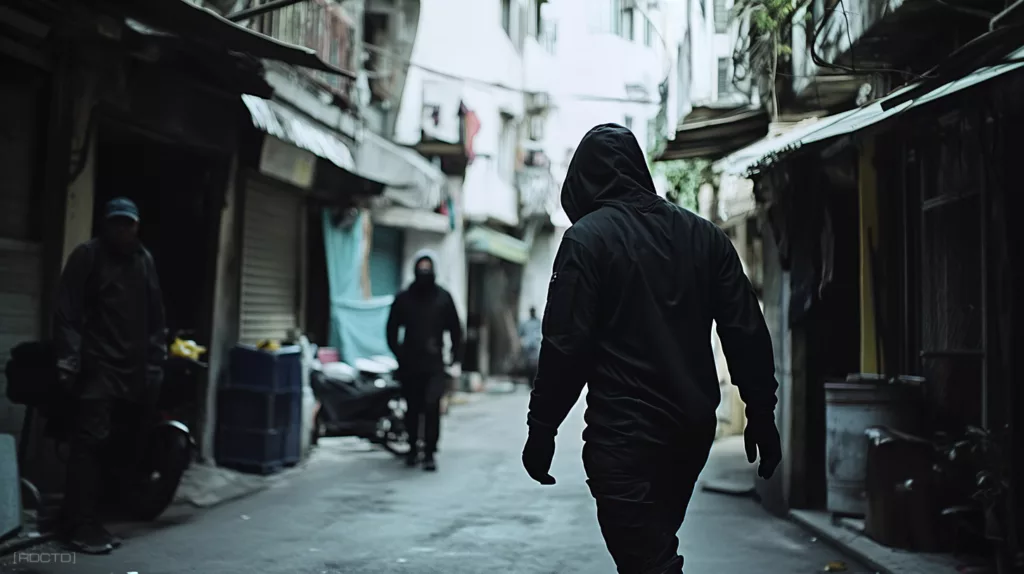
Anchor, Blocker, and Pusher Team Play
Street teams set an anchor (the one who holds the ground), a blocker (who drifts to cut your lane), and a pusher (who closes from behind). You’ll feel your cadence break – tiny slows, shoulder brushes, unnecessary apologies. If the blocker accelerates when you accelerate, timing is live.
- PRO TIP: Hard stop early, force the pusher to pass, then re-index the scene. If the anchor stays put while the others reposition, you just exposed the geometry. Take an exit or step into a staffed doorway.
Unnatural Loitering with Purpose
Not all loitering is hostile, street economies run on it. Flag the kind that has tasking: short loops circling the same stall, reappearing at the same alley mouth, or “waiting” with frequent peer checks to a corner sentry. Cigarettes and cheap coffee are common covers.
- PRO TIP: Time the loop. If the same face crosses your path on a different vector within five minutes, assume you’re being patterned. Change sides of the street and insert a deliberate detour that breaks their timing.
Communication Bursts Before Movement
Right before a move, there’s often a signaling hit – chin flicks, cap touches, two-tap phone buzzes without a glance at the screen, or a brief radio chirp tucked in a pocket. Street spotters (often teens) will glance off you to a handler and nod. If heads lift in sequence as you approach, that’s coordination.
- PRO TIP: When the “wave” triggers, stall under a camera or storefront light and force the initiator to break cover. If they hold, you just regained initiative.
Light Kill Zones
Bad actors shape the stage – a block where bulbs are busted out, shutters half-down, or a breaker “mysteriously” trips right as foot traffic thins. You’ll see silhouettes holding still in the darkest slice, waiting for your pupils to blow.
- PRO TIP: Treat sudden darkness as a tripwire. Cross early into better-lit angles or pause under a surviving light to re-scan. If you must pass, do it with speed and a barrier – parked cars or pillars between you and the dark.
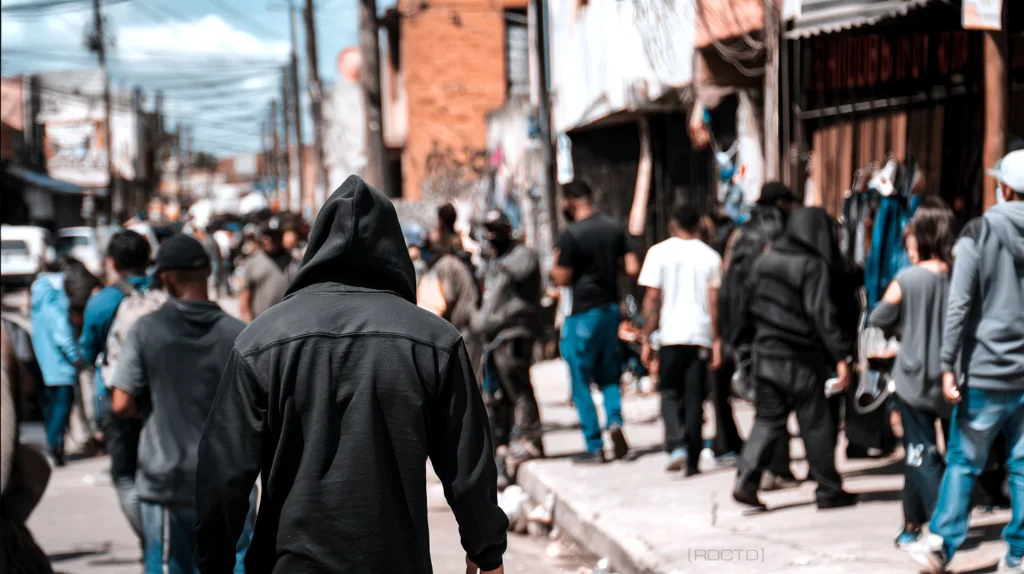
Social Proof Swarms
Four to eight kids or teens drift as a loose cloud – laughing, phones out, energy high – until they suddenly compress around a target object (your bag, your pocket, your bike). The noise is the cover, the silent center is the work. Common on transit platforms and festival streets where bystanders hesitate to intervene.
- PRO TIP: When the swarm compresses, don’t tug-of-war. Burst laterally out of the cluster, not backward, and loudly mark the item (“Blue backpack is mine!”). That breaks the frame and draws third-party eyes.
Counter-Surveillance Tells
Collection operatives and predatory crews both run crude SDRs: ducking into a shop to check if you pass, using reflective glass to watch your approach, or taking a sudden street-to-alley crossover to see if you commit. If they’re testing you, they’re not random.
- PRO TIP: Don’t chase. Let them “win” the test by not following, then parallel one block over and re-acquire from a safe distance or better, exit the area and scrap the errand.
Micro-Extortion Setups
A local “helper” suddenly appears when you park, enter a building, or lock a bike. Offering to “watch it” for a fee or to “keep you safe” crossing a block. Refusal triggers a crowding move or a reputational threat (“This guy doesn’t respect the area”). It’s soft control testing for bigger play.
- PRO TIP: Stay neutral, low emotion, and give a non-committal exit – “All set, thanks.” Keep moving toward staff, cameras, or a known node (security booth, store). Don’t escalate, don’t debate, and don’t open your bag.
Hand-Off Shadows
Pickpocket and phone-grab crews often use a taker and a cleaner. You’ll see the taker trail close, then peel off within seconds of contact to pass the item to a walker headed the opposite direction or onto a scooter. Watch for pre-positioned receivers – hands empty, pockets open, eyes on the taker rather than you. If the passer speeds up right after your bump, that’s your link.
- PRO TIP: If something feels off, do a quick pat-check while moving and pivot 180° to scan for the receiver, not the initial contact. Call it out loud (“Phone!”) to spike attention and disrupt the hand-off.

Environmental Pre-Set
The street tells on itself. Look for a suddenly dead stretch next to where it’s usually lively, a parked scooter facing out at a curb cut, or a delivery truck idling with the side door cracked – built-in cover and concealment. Loud music from a nearby car can mask the startle phase of an attack.
- PRO TIP: Read the street like a chessboard: if the next two squares are dark, tight, and give someone an easy flank, don’t step there. Cross early, or take the longer, brighter block.
Sound-Cut Triggers
On blocks where music and chatter are constant, a sudden hush followed by micro-movements – heads tilting, scooters idling down, doors clicking – often signals an impending move or a known crew’s arrival. Animals do it too: stray dogs go rigid, birds lift. The street is giving you a countdown.
- PRO TIP: Treat the quiet as a siren. Increase spacing, clear your hands, and reposition to a sightline with an exit. If you can’t exit, stack behind hard cover (pillar, parked car engine block) and make the first movement yours, not theirs.
Probe and Pretext
Before a grab or a collection pitch, you’ll get a probe: a too-friendly “Where you headed, boss?”, a fake petition, directions you didn’t ask for, or a bump that tests your reaction and hardware. The content isn’t the point, the distance is. If the pretext keeps you stationary, it’s a setup for the second actor.
- PRO TIP: Answer while moving, keep your bag shoulder away from contact, and set your feet. If they step to maintain shoulder-to-shoulder, cut a 45-degree angle toward space and end the conversation with a firm, neutral “No, thanks.”
Adrenaline Leaks and Pre-Attack Grooming
Right before go-time, the body leaks: jaw clench, nostril flare, rapid chest rise, tongue sweeping the lips, repeated hat readjustments, or sleeves pushed up. Feet will splay toward you even if the torso pretends otherwise. Breathing changes are visible under streetlight.
- PRO TIP: Treat grooming + angle + distance as a tripwire. If you see two of the three, you’re late – create a barrier, speak loud and assertive to draw eyes, and move decisively toward light, people, or security.
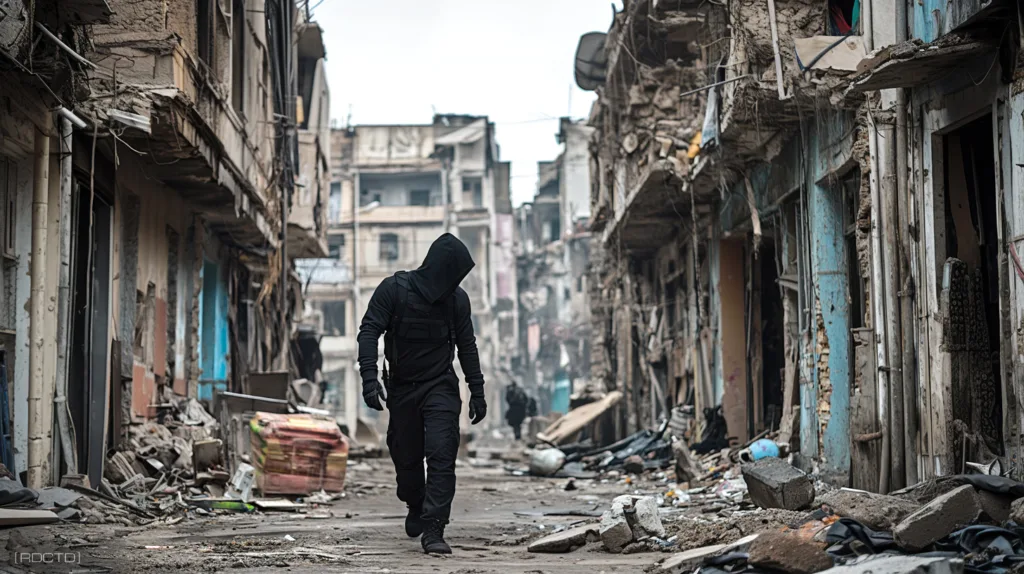
Shadowing via Reflections
Savvy actors don’t tail you head-on; they use bus windows, storefront glass, and car mirrors to keep you framed while pretending to window-shop. Watch for the head that doesn’t track the display – eyes cut to your ghost in the glass, then snap back. If you pivot and their posture freezes, you’re on their screen.
- PRO TIP: Exploit the same tradecraft. Use the glass to check your six without telegraphing. If the reflection confirms a shadow twice, change altitude (curb to street or vice versa), then route into staffed light.
Vehicle-Assisted Box-Ins
In the Bronx it’s cars, in Manila and Marseille it’s scooters. Watch for a slow roll pacing your stride, a scooter drifting counter-flow on your edge, or a rideshare that “arrives” right as you do. Side-by-side parking with a gap at the curb can make a quick pocket to pin you.
- PRO TIP: Walk on the inside of parked cars, not the traffic edge, and step onto a stoop when a slow-roll syncs with your pace. If an open rear door blocks you, step back, turn your hips, and create a passing lane they can’t own.
False Authority and Flash Credentials
Pre-collection actors sometimes pose as building security, delivery auditors, or utility checkers. No scanner actually scans, clipboards are blank, and badges flash fast with fingers covering text. They push for unit numbers, schedules, and who’s home. Street version: “Neighborhood watch” asking where you’re headed.
- PRO TIP: Tradecraft rule – verify, don’t comply. Ask for full ID held still, company callback numbers, and a supervisor name, then make the call yourself. Real authority welcomes verification; fakes get mouthy or bail. Move them to public space or shut the door and disengage.
Lookouts That Don’t Buy
Corner stores, sari-sari, tabacs – real customers touch product. Lookouts touch nothing (or superficially); they face the door, talk without looking at each other, and reset every time a new person enters. If you trigger a sudden quiet and shoulder turns as you step in, that’s not hospitality.
- PRO TIP: Mirror the clerk’s eyes. If staff look nervous or flick their gaze to a corner, treat it as an alarm. Make a small purchase near the exit and roll.
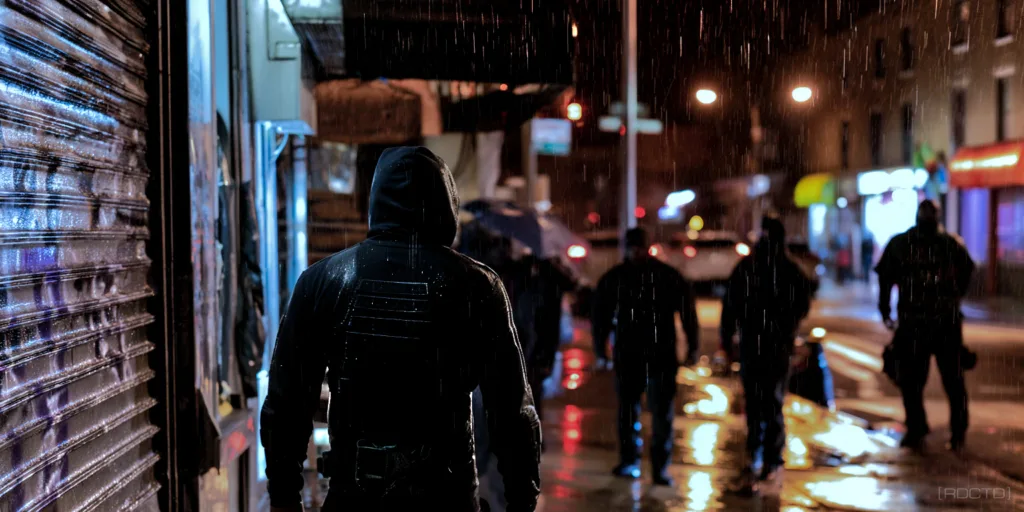
Ride-Share Mislabel
In busy zones, a car creeps up claiming your name or destination when you didn’t order – smooth pitch, casual “hop in.” Real drivers confirm, fakes lead. Scooters do it too: “Your delivery?” with no package. They want you seated, door shut, angles gone.
- PRO TIP: You initiate verification, not them. Check plate, driver photo, and route on your app before you approach the vehicle. If they pressure speed (“traffic’s crazy, let’s go”), step off the curb line and let them roll.
Sudden Crowd Chemistry Shifts
Street vibes move as a herd. When energy drops fast – laughter cuts, bodies angle away, vendors pack up early – something upstream changed: an aggressive crew, a police sweep, or a pending score. You’re not there to figure out why.
- PRO TIP: Don’t stare at the anomaly; flow with the crowd’s retreat while scanning your six. If the only open lane funnels you into a blind alley, reverse and take exposure over entrapment.
Stairwell Ambush Geometry
Tight stair stacks in projects, MRT overpasses, or Marseille walk-ups are perfect for a short-range hit. Tells: someone paused mid-landing pretending to text, another posted at the bottom “guarding” nothing, and sound gaps where you’d expect foot traffic. Shoulders bladed, hips set to control the rail – classic pre-position.
- PRO TIP: Don’t enter blind. If you must take the stairs, stop short of the threshold and angle so you can see both the next landing and your rear. If bodies freeze when you pause, break contact and take the elevator or a public route.
Transit Bag Relays
On packed jeepneys, R trains, or trams, crews stage a “bag shuffle”. One actor nudges your bag forward while another “makes room,” then a third receives it two riders down and exits at the next stop. You’ll feel your strap lighten and hear a helpful “Careful, boss” that masks the pass.
- PRO TIP: Anchor a strap under forearm, zip closures forward, and keep one hand on hardware at stops. If your bag shifts without your input, announce it loud and step toward the doors to force a reset.
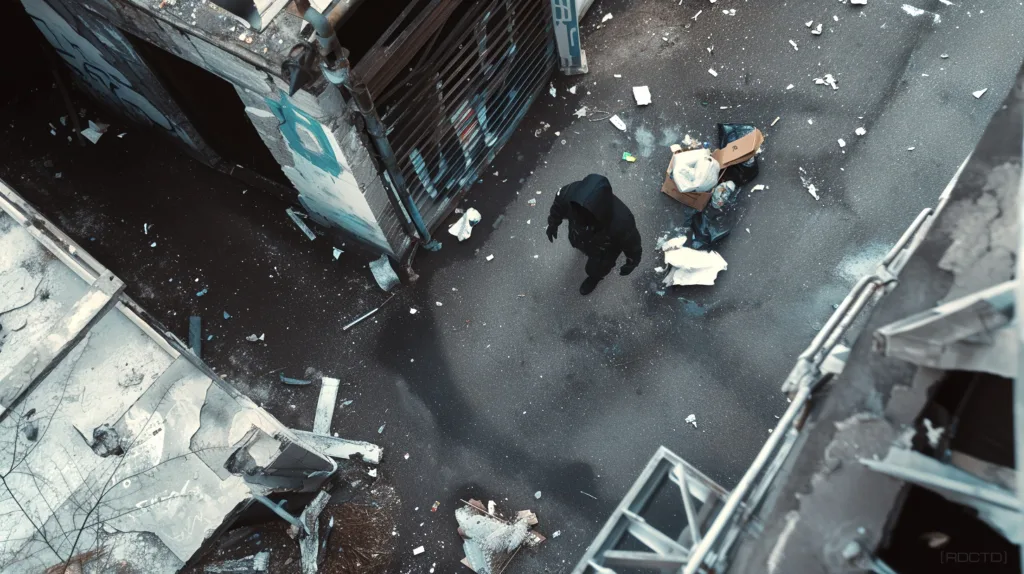
Drink-Down Stalls
Outside bars or sari-sari stands, a pair will “offer” a drink, cigarette, or lighter to freeze you in a friendly frame while the partner drifts behind your dominant side. The gift isn’t kindness – it’s Velcro. Hands get occupied, head dips, bag strap loosens.
- PRO TIP: Keep your strong side to open space. If you accept anything, step back one pace as you do, eyes up, bag anchored. Better yet, decline with a smile and a step – friendly, not stationary.
Late-Night Maintenance Mirage
After hours you’ll see a lone “worker” fiddling with a shutter, streetlight, or meter – no marked vehicle, no proper tools, no partner. The real task is to create a rationale to loiter and case entries, keys, or routines. In Marseille, watch for fake courier jackets; in Manila, improvised “barangay helper” vests.
- PRO TIP: Apply simple verification – logos that don’t match, clean boots on a “laborer,” or fresh gear with no wear. Don’t engage; change approach, log time/location, and use a different entry under lighting.
Time-on-Target That Grows Legs
If you’re interesting to a collector, you’ll pick up repetition: same face at the bakery, then at the ATM, then two blocks from your gym. Coincidence once, pattern twice, surveillance at three.
- PRO TIP: Change departure times, swap sides of the street, and insert a quick errand detour. If the face survives your changes, you’ve got a live tail. Enter a staffed location and ask for help, or call it in if you have that option.
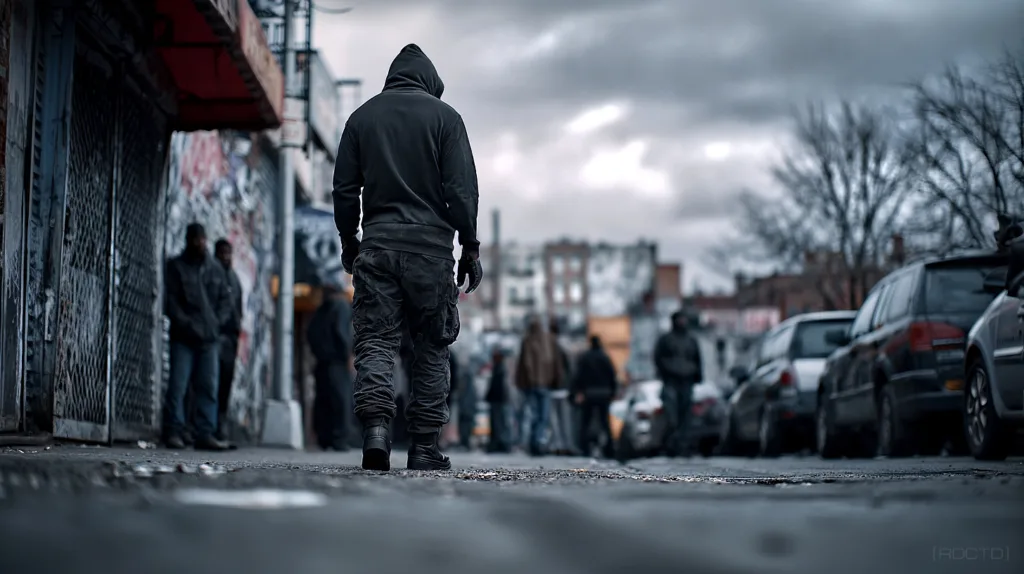
Tool Pre-Stage Tells
Before a robbery or assault, simple tools appear: a scarf or bandana suddenly raised, gloves pulled on in warm weather, helmet visors snapped down at walking speed, or a backpack shifted to front ready to unzip. In Manila heat, watch for motorcycle riders who kill the engine and coast silent into position.
- PRO TIP: Clock the moment a face disappears (mask/visor up) or hands glove up – that’s your action point. Create lateral space, use a parked vehicle as a shield, and put hard corners between you and them.
Team Silence Before Contact
Groups are noisy until they’re not. Right before the move, chatter drops, eyes cut, and bodies spread to create lanes. You’ll also see “late joiners” appear from doorways to close the rear.
- PRO TIP: Use your voice early – “Back up” at street volume buys witnesses and time. People with legitimate business usually talk back, attackers commit or peel. Either way, you get clarity fast.
Cased Access Points
Stairwell fire doors, garage roll-ups, side gates – if someone repeatedly checks the latch or tests the keypad timing without ever going through, they’re not lost. They’re building a playbook. Big tell: a quick push timed to a resident’s entry to ride the slipstream.
- PRO TIP: Don’t badge strangers. Shield your code, wait out hoverers, and re-baseline from distance. If someone tries to draft on you, stop short and let the door re-lock. Their reaction will tell you everything.
Street awareness is a skill, not a gift. Good operatives live by baselines, geometry, and timing. Civilians can borrow that skillset and stay ahead of harm without becoming paranoid or disrespectful to the community they’re moving through. Focus on behaviors, own your space, and make small, early decisions that keep you out of pockets where bad actors work best. The best fight’s the one you never have because you read the street and moved first.
[INTEL : Active ‘Street Assessment’ Method]
[OPTICS : The Bronx, New York City]







